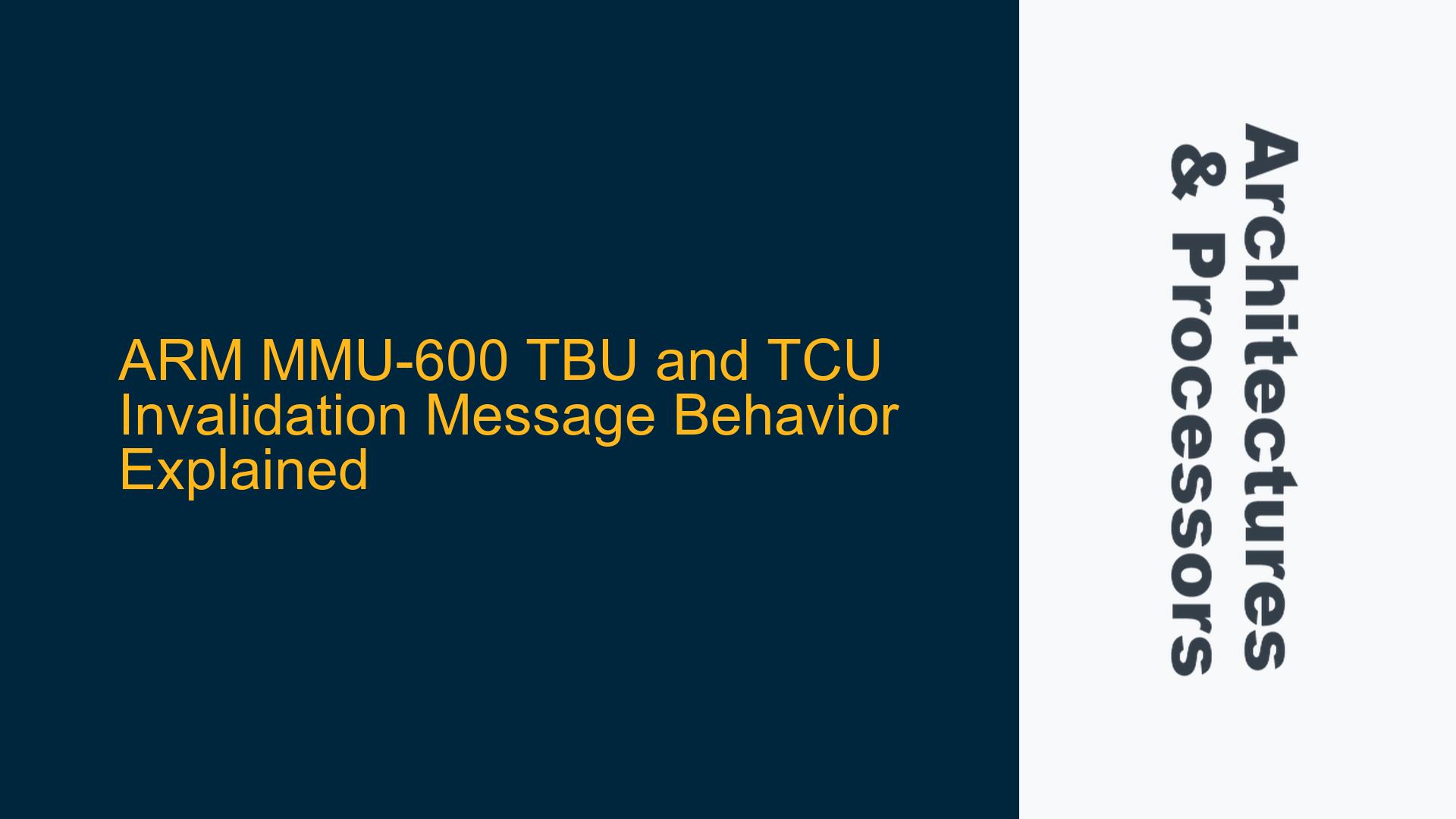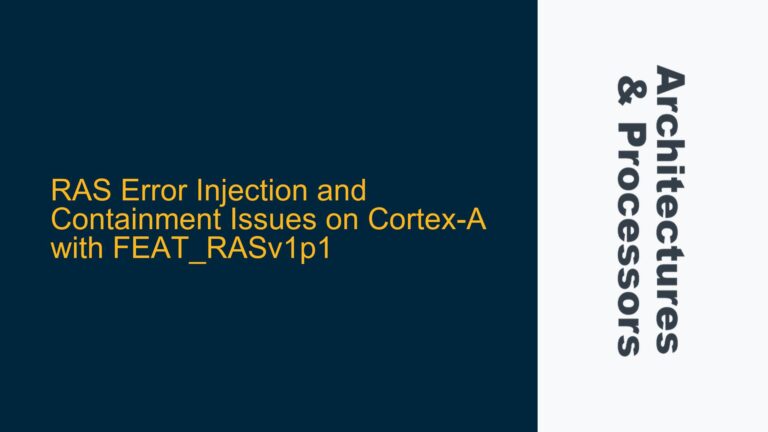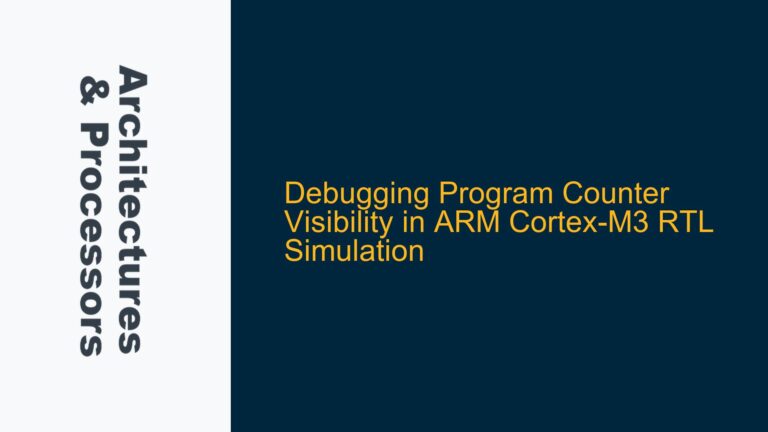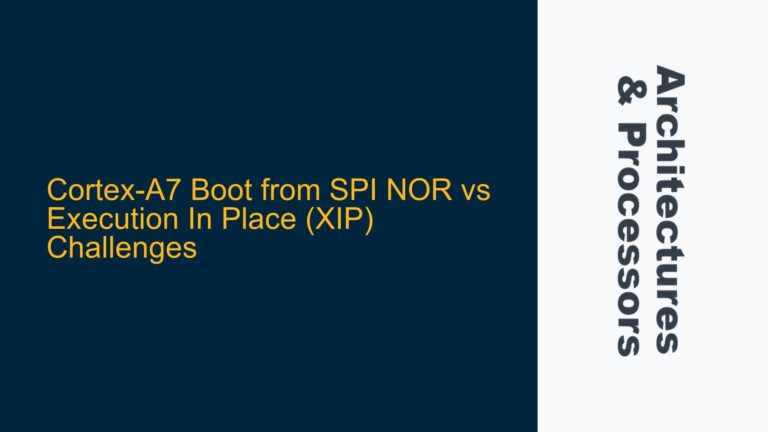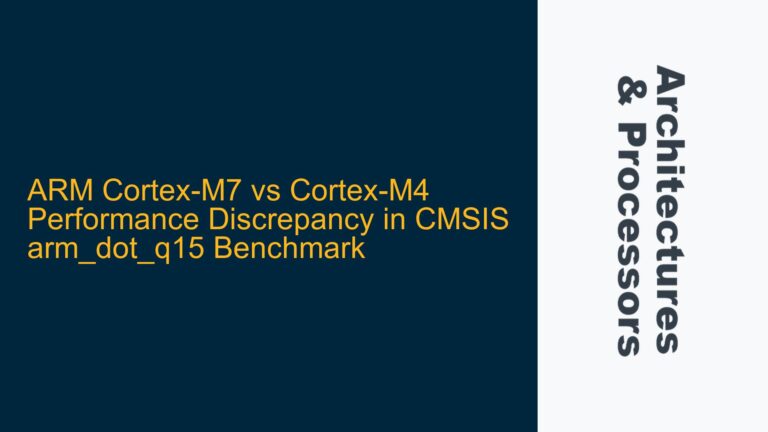ARM MMU-600 TBU and TCU Invalidation Message Scenarios
The ARM MMU-600 (Memory Management Unit) is a critical component in modern ARM-based systems, particularly in high-performance computing and embedded systems where memory management and translation are paramount. The MMU-600 consists of two primary units: the Translation Buffer Unit (TBU) and the Translation Control Unit (TCU). Understanding the interaction between these units, especially concerning invalidation messages, is crucial for system designers and firmware developers. Invalidation messages are used to ensure that the translation lookaside buffers (TLBs) and other caches remain coherent with the memory mappings defined by the operating system or hypervisor.
The TBU is responsible for handling translation requests from the processor and managing the TLBs. The TCU, on the other hand, is responsible for managing the page tables and ensuring that the TBU has the correct translations. When a page table entry is modified, the system must ensure that any stale entries in the TBU are invalidated to prevent incorrect translations. This is where invalidation messages come into play. The TBU can send invalidation messages to the TCU, and in some cases, the TCU may also send invalidation messages to itself or other TCUs in a multi-core or multi-cluster system.
The primary scenarios where the TBU sends invalidation messages to the TCU include changes to the page table entries, such as during a page remapping sequence, or when the operating system or hypervisor explicitly requests an invalidation. Additionally, the TCU may send invalidation messages to itself or other TCUs in cases where a global invalidation is required, such as during a context switch or when a new process is scheduled. These interactions are critical for maintaining memory coherence and ensuring that the system operates correctly.
Memory Remapping and Context Switch-Induced Invalidation Sequences
One of the most common scenarios where the TBU sends invalidation messages to the TCU is during a page remapping sequence. Page remapping occurs when the operating system or hypervisor changes the virtual-to-physical address mapping for a particular memory region. This can happen for various reasons, such as memory compaction, dynamic memory allocation, or process migration. When a page table entry is modified, the TBU must be informed to invalidate any cached translations that may now be stale. This is typically done by sending an invalidation message from the TBU to the TCU.
Another scenario where invalidation messages are sent is during a context switch. A context switch occurs when the operating system switches from executing one process to another. Each process has its own set of page tables, and when a context switch occurs, the TCU must ensure that the TBU is aware of the new page tables. This often involves sending invalidation messages to the TBU to invalidate any cached translations from the previous process. In some cases, the TCU may also send invalidation messages to itself or other TCUs to ensure that all units are synchronized.
The timing and sequence of these invalidation messages are critical for system performance and correctness. If invalidation messages are not sent or are sent at the wrong time, the system may experience memory coherence issues, leading to incorrect translations and potential system crashes. Therefore, it is essential for system designers and firmware developers to understand the conditions under which these invalidation messages are sent and to ensure that they are implemented correctly.
Implementing Correct Invalidation Sequences in ARM MMU-600 Systems
To ensure that the ARM MMU-600 operates correctly, system designers and firmware developers must implement the correct invalidation sequences. This involves understanding the conditions under which the TBU and TCU send invalidation messages and ensuring that these messages are sent at the appropriate times. One of the key considerations is the use of memory barriers to ensure that invalidation messages are not reordered or delayed by the processor or memory system. Memory barriers are instructions that enforce a strict ordering of memory operations, ensuring that all previous memory operations are completed before any subsequent operations are executed.
In addition to memory barriers, system designers must also consider the use of cache management instructions to ensure that the TLBs and other caches are properly invalidated. This may involve using instructions such as the Data Synchronization Barrier (DSB) and Instruction Synchronization Barrier (ISB) to ensure that all pending memory operations are completed before the invalidation messages are sent. The DSB instruction ensures that all memory accesses before the barrier are completed before any memory accesses after the barrier are executed. The ISB instruction ensures that all instructions before the barrier are completed before any instructions after the barrier are executed.
Another important consideration is the use of the Translation Table Base Register (TTBR) and the Context ID Register (CIDR) to manage the page tables and context IDs. The TTBR holds the base address of the page tables, and the CIDR holds the context ID for the current process. When a context switch occurs, the operating system or hypervisor must update the TTBR and CIDR to reflect the new process’s page tables and context ID. This often involves sending invalidation messages to the TBU and TCU to ensure that any cached translations from the previous process are invalidated.
In multi-core or multi-cluster systems, the use of broadcast invalidation messages may also be necessary to ensure that all TBUs and TCUs are synchronized. Broadcast invalidation messages are sent to all units in the system, ensuring that any cached translations are invalidated across all cores or clusters. This is particularly important in systems where multiple cores or clusters may access the same memory regions, as it ensures that all units have a consistent view of the memory mappings.
Finally, system designers and firmware developers must also consider the performance implications of invalidation messages. Invalidation messages can introduce latency into the system, particularly in high-performance computing environments where memory access patterns are critical. Therefore, it is essential to optimize the invalidation sequences to minimize the impact on system performance. This may involve using techniques such as batch invalidation, where multiple invalidation messages are combined into a single operation, or using hardware-assisted invalidation mechanisms provided by the ARM MMU-600.
In conclusion, the ARM MMU-600 TBU and TCU invalidation message behavior is a critical aspect of system design and firmware development. Understanding the conditions under which these messages are sent and implementing the correct invalidation sequences is essential for ensuring system correctness and performance. By using memory barriers, cache management instructions, and optimizing invalidation sequences, system designers and firmware developers can ensure that the ARM MMU-600 operates correctly and efficiently in a wide range of applications.
